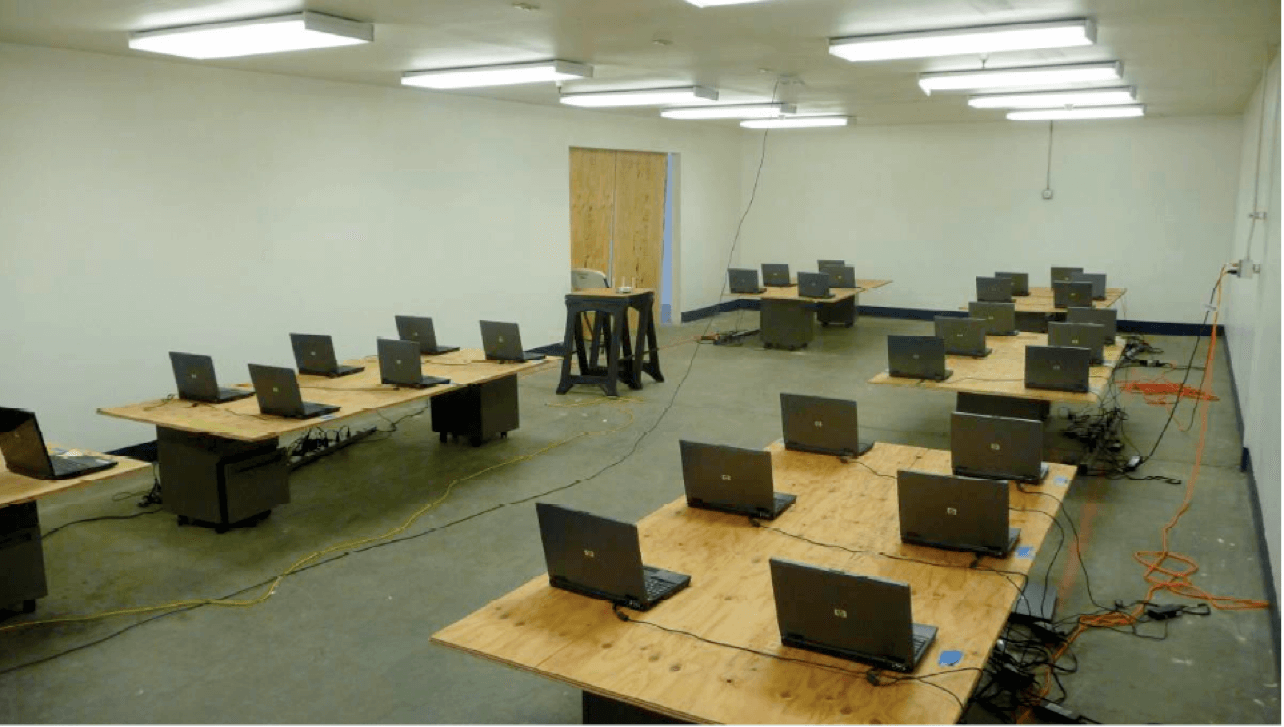With our expectation to be constantly connected, it's easy to forget the incredible advances in wireless technology over the last ten years that has allowed us to work the way we want.
When I joined Aruba, a Hewlett Packard Enterprise company, in 2006 in Australia, my first customer was an RSL Club, a popular meeting place in Australia. It's a great place for lunch, and the poker machines are a big draw. The waiters took orders using Palm Pilots, which were connected to the kitchen via Wi-Fi. In-building cell service was poor, so the staff used VoIP phones over the wireless LAN. Looking back, it was a pretty simplistic network—a dozen devices and an 802.11b/g network designed to maximize coverage, but it was innovative for the time.
Getting smarter
Fast-forward to 2009 and another state-of-the-art wireless deployment. Australia began a digital learning initiative. All secondary students were given netbooks and Wi-Fi was brought into the classrooms. I was involved in the deployment in the schools in Sydney and across all of New South Wales.
Wireless technology had advanced. 802.11n achieved record-breaking association speeds of 300Mbps, and access points (AP) had clever radios that used multiple antennas to transmit and receive data - MIMO. The design of the WLAN shifted from coverage to capacity to accommodate the growing number of devices.
As part of the selection process, the wireless LAN vendors had to demonstrate that their products could support 30 netbooks connected to a single AP with only the 5GHz radio enabled and each netbook had to simultaneously sustain 2Mbps up and 2Mbps down throughput. It really pushed the boundaries of what the technology could achieve, and the Aruba engineering team persevered. We had to simulate the test case in Sunnyvale and optimize the radio performance to meet these objectives whilst having our engineering resources support the tests at the pilot school in Sydney. We passed the test case with flying colors, and we won the single largest deal in the company's history!

The network was designed for high-density, but it only needed to support a single type of device. This was the environment in 2009. That requirement would change with the turn of the year.
The start of workplace transformation
In 2010, we won our first true digital workplace deal—for a large financial institution in Sydney. The organisation was moving into a new building supporting up to 3000 staff and the plan was for everyone to have a laptop and a Cisco VoIP Wi-Fi phone would be provided to staff as they entered the building for all of their customer calling needs. The organisation wanted to cut the cord on its wired network.
The building was stunning, with an open floor plan conducive to collaboration and a very large atrium between floors. But the architecture, with no interior columns, was challenging for the traditional methods of Wi-Fi deployment. We had not encountered a situation where a laptop in some parts of the building could hear almost 100 BSSIDs due to the density of access points and all of the open space' Nevertheless, we designed the WLAN to have the capacity and coverage to support the many devices as well as voice and other demanding applications.
But the laptops kept crashing because they were seeing so many APs. The network infrastructure had the capacity, but the wireless chips in the laptops hadn't kept pace. We had to involve Intel's engineering team to solve the problem with the drivers and once they understood the issue I remember them saying "we knew this day would come". They knew that as Wi-Fi began to proliferate the device drivers would have to get smarter
Voice over Wi-Fi was problematic too. Unfortunately, the user experience and calling features with the VoWi-Fi handsets were not what the staff expected so instead a BlackBerry was issued to staff and they continues to use the cellular network. The phone technology wasn't ready for the digital workplace.
A proliferation of device types
Jump ahead to the explosion of mobile devices in 2013. iPhone, iPad and Android devices flooded into businesses and schools, and the WLAN needed to accommodate the broad mix. Bring-your-own-device (BYOD) turned security policies upside down and IT managers had to find new ways to control network access for personal and corporate devices. New forms of contextual based access management started to emerge like Clearpass to simplify this process. At the same time, the industry introduced 802.11ac bringing a 3 – 4 X improvement in Wi-Fi device speed and capacity. This was timely as the 802.11n started to struggle in the new heterogeneous device mix.
Ready for the next thing?
Today's environment is more complex and diverse than anything we've ever seen before, and the Internet of Things (IoT) is the industry's next challenge, as massive numbers of devices are being connected. As customer's embrace the digital workplace they now expect full mobility and location awareness within the office environment with any application working flawlessly from any device in any location and they want to have an insight into the user experience. Both the infrastructure and applications are now up to the challenge.
We have further improved capacity with 802.11ac Wave 2 starting to become widely deployed and in some cases, the newest generation of access points supporting Smart Rate wired couplings can burst over 1GBps goodput.
The availability and resiliency are there too for the digital workplace, with new and easier ways to build redundant campus networks such as controller clustering and in service feature upgrades providing the same level of service availability as we have become used to in the data centre. With advances in network virtualization, it's far easier deploy security policies, quality-of-service profiles, or other services on the campus network without laborious and manual IT intervention. And IT managers can keep pace with the explosion of connected devices, with the ability to identify all devices on the network, whether mobile devices, traditional endpoints, or IoT devices, and enforce the appropriate policies.
For wireless, the digital workplace requirements are more complex than ever, but at Aruba, we're excited at the prospect of surmounting these challenges. We've got the heritage, experience, and tools to help you tackle the toughest networking problems. And that gives you the confidence that you can meet your user's expectations to work anywhere, anytime.




